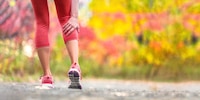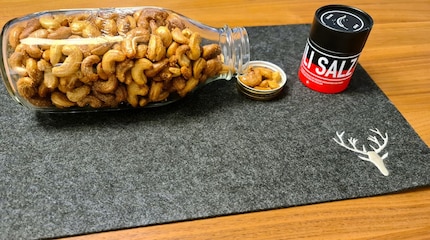
Background information
Myth busting: does magnesium prevent muscle cramps?
by Claudio Viecelli

Ideal nutrition for hiking or hunting trips is individual and depends on various factors. These include personal food preferences, the intensity of the activity and how much weight you want to carry in your rucksack.
Whenever I go hunting at high altitude, I ask myself the same question in the morning: what food do I pack? As my hunting rucksack with rifle, thermal imaging device, binoculars, spare clothes, seat cushion, first aid equipment, recovery kit and 1 litre of water already weighs heavily on my shoulders, I personally optimise for energy density and weight. In other words, I try to pack food that gives me a lot of energy but weighs little (and takes up little space). Fats have the highest physical energy density. 1 g of fat provides around 9 kilocalories (kcal). That’s more than twice as much as carbohydrates or protein, which each provide 4 kcal per gramme. Nuts contain a lot of fats, carbohydrates and proteins, giving them a high energy density at a low weight.
I love almonds and cashew seeds, which are often mistakenly referred to as cashew nuts. Cashews consist of about 2% water, 15% protein, 46% fatty acids, 33% carbohydrates, 3% fibre and 1% minerals. 100 grammes of cashew seeds equal roughly 574 kcal.
I like them roasted and salted –
especially with chili salt by The Art of Spice that I recently discovered.
I use large cashews and usually roast one kilogramme at a time.

An interesting question that depends on body weight, duration and type of activity. Some activities require more energy, others less. There’s a lot of science surrounding this question, covering areas such as metabolic processes in sport, obesity and diseases.
In 1990, Jetté, Sidney and Blümchen [1] defined a metabolic equivalent as the amount of oxygen consumed while sitting at rest. It’s 3.5 ml of oxygen per body mass and per minute, which corresponds to about 1 - 1.2 kcal/min for a person weighing 70 kg. The abbreviation for metabolic equivalent is MET. One MET therefore corresponds to the amount of energy your body uses every minute relaxing. When you start moving, you consume more oxygen and therefore more energy, which is then estimated in relation to the resting state. 2 MET means you consume twice as much as at rest (i.e. 7.0 ml of oxygen per kilogramme of body mass and per minute).
In 1993, Ainsworth et al. [2] published a compendium to classify the energy costs of various activities, which was expanded in 2011 [3].
Hunting with a hunting rucksack is estimated at 9.5 MET and hiking with a day rucksack at 7.8 MET. This allows me to calculate my energy costs with the following formula:
Kilocalories = MET × body mass [kg] × time [h]
Therefore, during my one hour hike to my hunting post, I burn around 700 kcal, which means I should take about 125 g of my salted cashews with me. Incidentally, I can make good use of the salt to compensate for the loss of sodium through sweat.
The Swiss Society for Nutrition only recommends a daily intake of 20-30 g of unsalted nuts or seeds [4]. Having said that, a balanced diet is important, but not the subject of this article. Roasted and salted cashews are just a way to carry a lot of energy (with little weight) on a day trip.
Here’s a little brain teaser for the comments section:
Which has more kilocalories – 100 g roasted almonds (sugar + almonds) or 100 g pure almonds?
Header image: Claudio Viecelli
Molecular and Muscular Biologist. Researcher at ETH Zurich. Strength athlete.
Interesting facts about products, behind-the-scenes looks at manufacturers and deep-dives on interesting people.
Show all